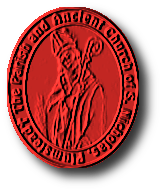Music has played an important role in public worship since at least the Middle Ages. From the earliest plainsong melodies to the elaborate Mass settings by Bach and Mozart, much of western music has taken its inspiration from the liturgy. That tradition continues today, and many young people have their first experience of serious music through singing in church.
At S. Nicholas the music is performed under the guidance of our Organist and Master of the Choristers, Marc B Naylor D.Mus. FTCL AGSM L.Mus.A. Cert. GSMD(P). Dr Naylor joined us several years ago, having previously played at S. Augustine, Belvedere and at S. Magnus the Martyr, London Bridge.
The Organ
.png)
The present organ was built by J.W. Walker in 1951 to replace an earlier organ that incurred bomb damage during the Second World War. The organ is placed in the north chancel chamber, from which it speaks clearly into the church. It is played from its detached console at the rear of the church where the choir stalls are positioned. The action is electro-pneumatic.
The specification is as follows:
.png)
.png)
.png)
.png)
- Department and Stop List
- 1 Acoustic Bass 32
- 2 Open Wood 16
- 3 Bourdon 16
- 4 Salicional 16
- 5 Octave 8
- 6 Bass Flute 8
- 7 Octave Flute 4
- 8 Fagotto 16
- 9 Tromba 8
- 10 Contra Salicional 16
- 11 Open Diapason 1 8
- 12 Open Diapason 2 8
- 13 Wald Flute 8
- 14 Dulciana 8
- 15 Principal 4
- 16 Twelfth 2 2/3
- 17 Fifteenth 2
- 18 Tromba 8
- 19 Violin Diapason 8
- 20 Rohr Flute 8
- 21 Gamba 8
- 22 Voix Celeste 8
- 23 Principal 4
- 24 Flute 4
- 25 Fifteenth 2
- 26 Mixture III
- 27 Contra Fagotto 16
- 28 Trumpet 8
- 29 Oboe 8
- 30 Tremulant
- Pedal
- Great
- Swell
- Accessories
- 5 combination pistons to Swell, duplicated by Toe Pistons
- 4 combination pistons to Great and Pedal, duplicated by Toe Pistons
- Toe piston for Great to Pedal Coupler
- Thumb Piston for Swell to Pedal Coupler
- Double touch canceller
- Great and Pedal combinations
- Balanced swell pedal
Historical Organs
There is little known of the earlier organs at S. Nicholas. The following is the result of much research, although sadly nothing has been found in the church archives regarding the history of organs at S. Nicholas.
The first organ that we know of was by the firm of Hunter, built around 1870. It was a tracker action instrument with mechanical stop action and was moved to S. Alphage, Burnt Oak, Edgware in 1927. The specification was as follows:
- Department and Stop List
- 1 Bourdon 16
- 2 Open Diapason 8
- 3 Stopped Diapason Bass 8
- 4 Stopped Diapason Treble 8
- 5 Dulciana 8
- 6 Principal 4
- 7 Lieblich Flute 4
- 8 Fifteenth 2
- 9 Open Diapason 8
- 10 Stopped Diapason 8
- 11 Principal 4
- 12 Oboe 8 TC
- Pedal
- Great
- Swell
- Couplers
- Swell to Great; Swell to Pedal; Great to Pedal
- Accessories
- 3 Composition Pedals to the Great
- Swell Pedal
- Kick stick and pedal
- Console
- Flat jambs; Labels font: Gothic;
- Pedalboard
- Radiating concave – compass 29 notes (missing C#)
This organ was destroyed by fire in 2000.
The next organ of which there is a record was a three manual and pedal instrument, possibly built by Monk in 1905. This instrument was first installed in Crouch Hill Presbyterian Church and was moved to S. Nicholas in 1927.
The specification is as follows:
- Console
- Swell to Pedal
- Swell to Great
- Swell to Choir
- Choir to Pedal
- Great to Pedal
- Couplers
- Department and Stop list
- 1 Open Diapason 16
- 2 Bourdon 16
- 3 Octave 8 12
- 4 Lieblich Gedact 8
- 5 Dulciana 8
- 6 Salicional 8
- 7 Wald Flute 4
- 8 Clarionet 8 TC
- 9 Double Open Diapason 16
- 10 Open Diapason 8
- 11 St Diap and Claribel 8
- 12 Keraulophon 8
- 13 Principal 4
- 14 Harmonic Flute 4
- 15 Lieblich Flute 4
- 16 Piccolo 2
- 17 Cornopean 8
- 18 Bourdon 16
- 19 Violin Diapason 8
- 20 Gedact 8
- 21 Gamba 8
- 22 Voix Celeste 8 TC
- 23 Principal 4
- 24 Piccolo 2
- 25 Mixture III
- 26 Trombone 8
- 27 Oboe 8
- Pedal
- Choir
- Great
- Swell
- Accessories
- 3 toe pedals each to Great and Swell
This organ was destroyed by enemy action on 6 February 1945.
Dr Naylor would like to thank the British Institute of Organ Studies (BIOS) and the National Pipe Organ Register at The Royal College of Music for their help in supplying the above information.
.png)
.png)
.png)
.png)

.png)
.png)